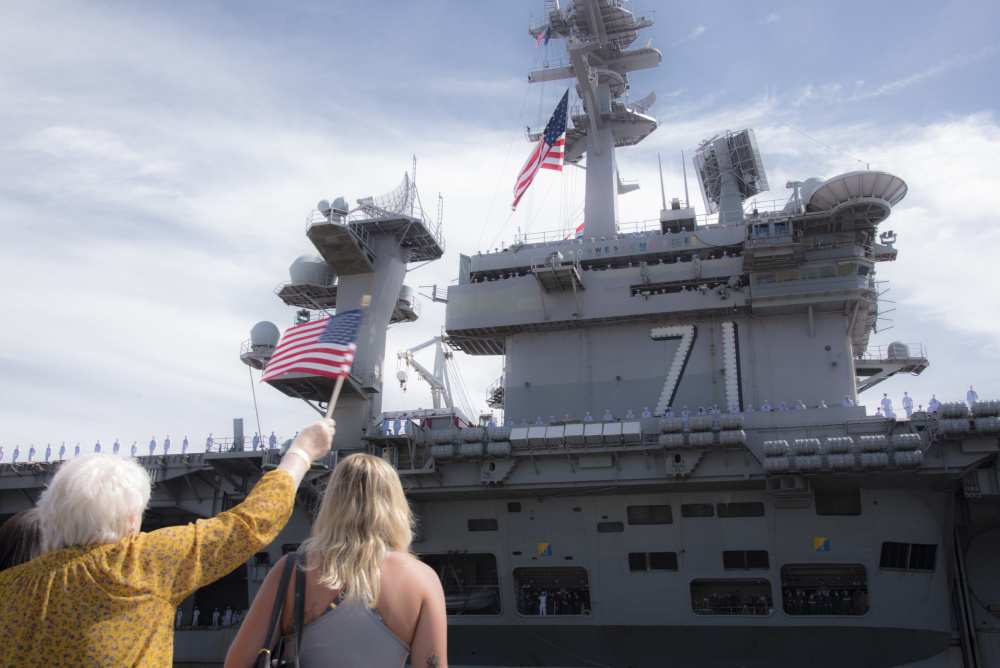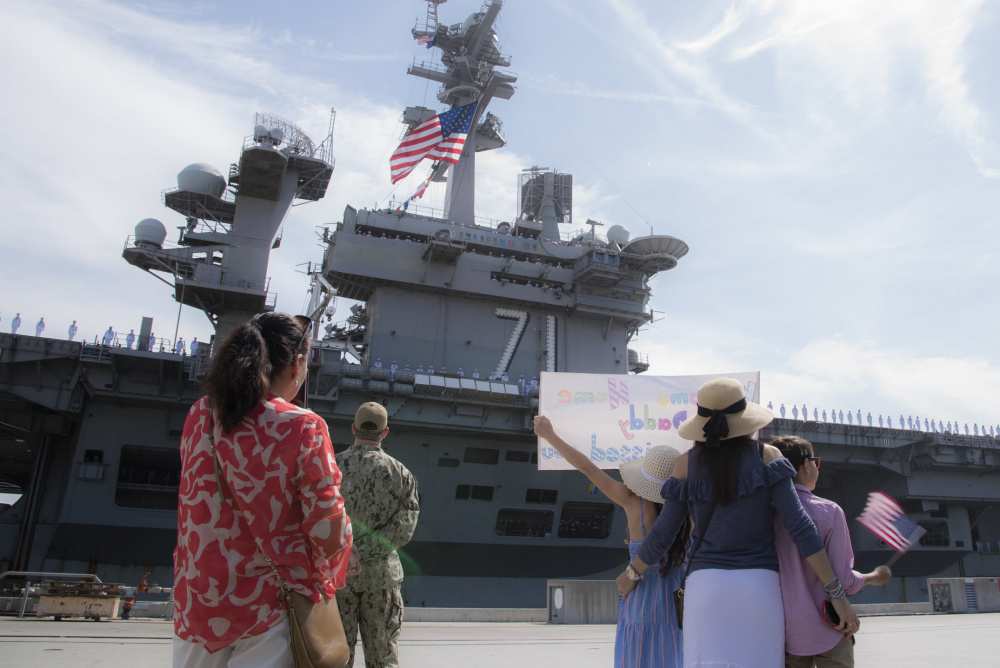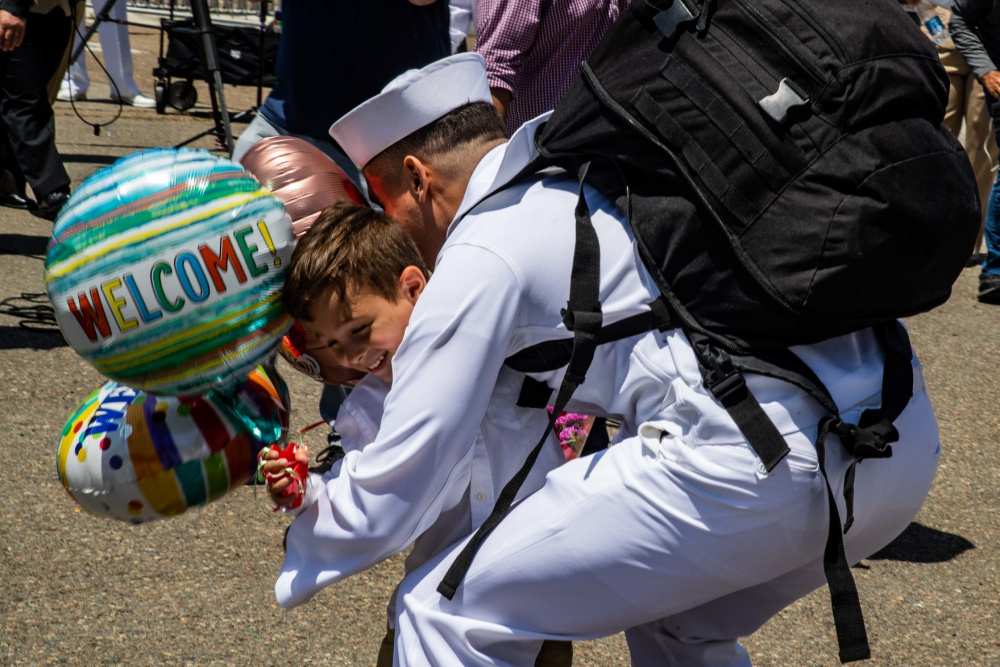More than 4,500 sailors aboard the aircraft carrier Theodore Roosevelt returned to San Diego Tuesday after more than six months at sea. It was the carrier’s second deployment in less than a year.
Theodore Roosevelt sailors and their families can expect a long reprieve from oceangoing operations for the near future, according to Rear Adm. Doug Verissimo, the commander of the carrier strike group.

“Everybody will get a minimum of four to five months of coming home almost every night with some sporadic work here in the local area,” Verissimo said during a short news conference.

While deployed, the Roosevelt supported operations in the Western Pacific with the Nimitz carrier strike group and the Makin Island expeditionary strike group, the Navy said in a statement. Due to the threat of the coronavirus, the ship did not make any port calls while deployed, Verissimo said.

The sailors of the Theodore Roosevelt and its air wing returned to a much different San Diego than the one they left on December 7. That day, almost 2,000 new coronavirus cases were reported by the county, a number that would continue to climb until reaching a seven-day average peak of more than 4,200 new cases per day in January.

The seven-day average for new cases now is below 90. And, with the Navy’s relaxation of coronavirus restrictions, most family members, friends and assembled media at Tuesday’s homecoming opted against wearing masks — a stark difference from the ship’s July homecoming from its ill-fated first 2020 deployment. Upon the previous return, families were not allowed to gather pier-side to welcome their sailors home.

The ship left San Diego for that first deployment in January 2020. In March, as the world began coming to grips with the scope of the pandemic, the virus began spreading out of control on the Roosevelt, eventually infecting almost a third of its crew. The outbreak led to the firing of the ship’s captain, Capt. Brett Crozier — and, eventually, the resignation of acting Navy secretary Thomas Modly, after he made disparaging comments about Crozier to the crew.

In November, after being home in San Diego only a few months, sailors began mandatory quarantines to ensure a “clean ship” environment. Sailors were unable to spend the Thanksgiving holidays with family members and others. And, after going to sea Dec. 7, they missed the rest of the holiday season as well.

Monique Hicks, whose husband, Petty Officer 1st Class Donald Hicks serves on board, said she tried to exercise as much as possible to avoid thinking about the long periods of separation.
“It’s never not hard but you try to do what you can,” she said.
Some of the family members waiting to be reunited with their service-member loved ones were service members themselves — something that can add extra challenges to deployment separations.
Jessica Scott, a petty officer 1st class stationed at Naval Base San Diego, waited outside the pier gates for her husband, Chief Petty Officer Abraham Lara, with their two kids — Arleigh, 7, and Primrose, 3. Scott said the last year and a half have been difficult.
“It’s been really tough,” she said. “Probably more for my husband than for me — he’s made a lot of sacrifices for our family. He was deployed last year, too, and when COVID happened and they got sidelined in Guam, it was just miserable for him.”
Jason Jenkins, a petty officer 3rd class on the Roosevelt, held his 2-month-old daughter Sage for the first time after walking off the brow of the ship. New fathers are among the first allowed off following a deployment. Sage’s mom, Ja’Rielle Taylor, was previously assigned to the Roosevelt herself and deployed with the ship last year. That’s when she and Jenkins became a couple, she said.
Taylor is now on shore duty at another San Diego command and is still on maternity leave. She said that her mother and sister came out from Atlanta to help her when Sage was born.
“It was worth the wait just to see this beautiful moment,” she said.
Jenkins said that knowing his new family was waiting for him in San Diego helped him refocus on his job.
“Waking up every day knowing that she was back home, I knew what I was doing was for a good cause,” Jenkins said. “That’s how I got through it.”
___
(c) 2021 The San Diego Union-Tribune
Distributed by Tribune Content Agency, LLC.



